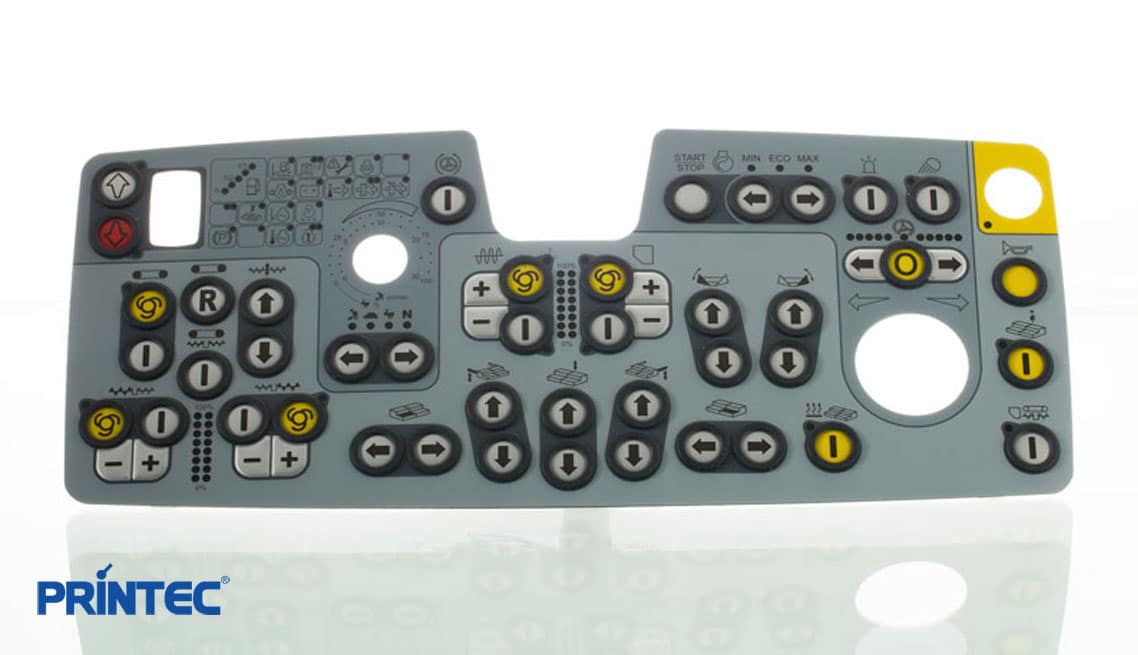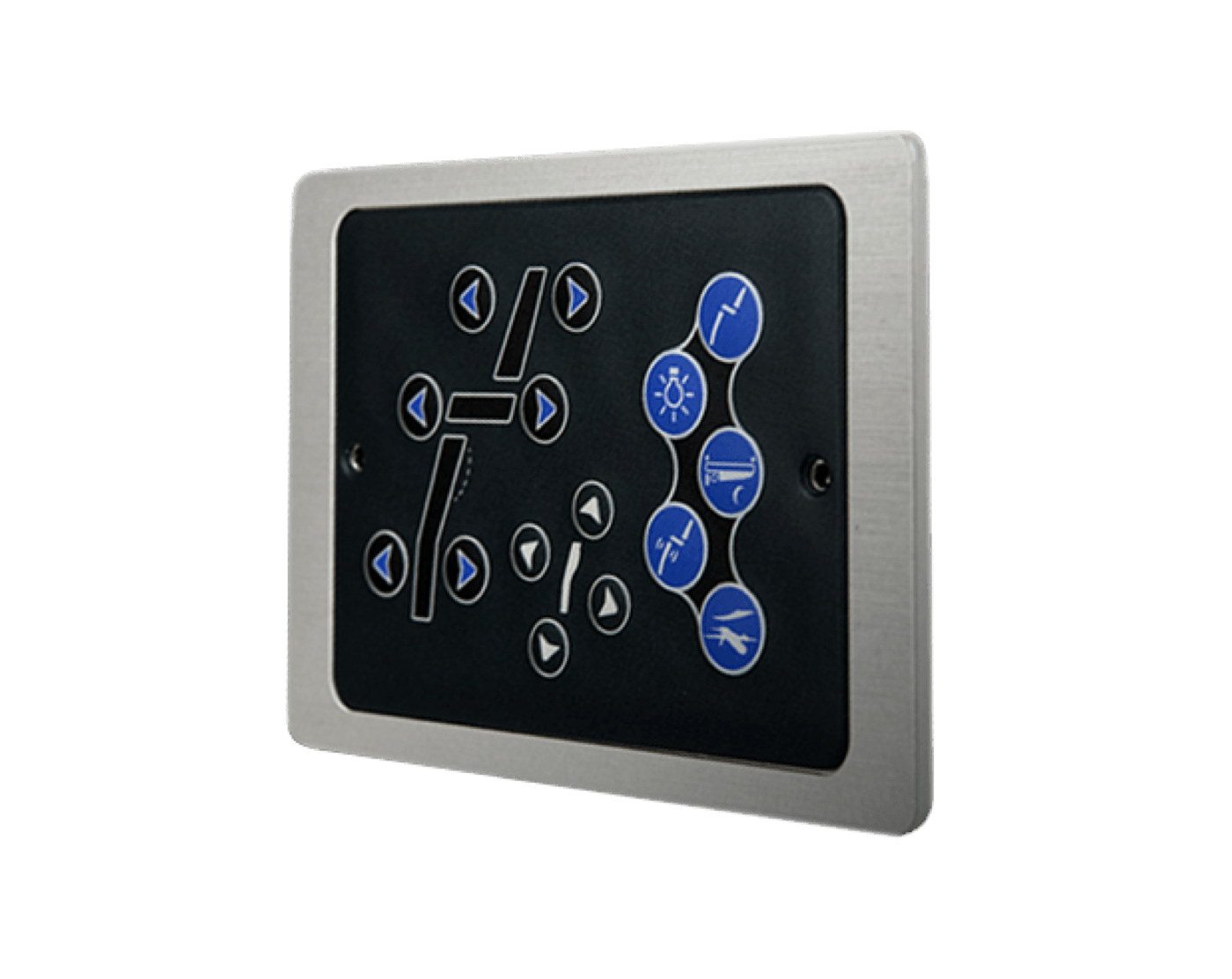If longevity matters, sourcing from a seasoned membrane switch manufacturer is essential.
If longevity matters, sourcing from a seasoned membrane switch manufacturer is essential.
Blog Article
Everything About Membrane Layer Change: Understanding Its Layout and Capability
When you assume about the control user interfaces in contemporary tools, membrane buttons frequently come to mind. Allow's explore what collections membrane layer switches apart from various other control systems.
What Are Membrane Layer Switches?

Membrane buttons can also be customized pertaining to form, size, and graphics, allowing suppliers to develop one-of-a-kind interfaces customized to certain items. Generally, membrane layer switches play a considerable role in enhancing customer experience throughout a broad variety of applications.
How Membrane Layer Switches Over Job
When you press a trick on a membrane switch, it turns on a straightforward yet reliable mechanism. membrane switch manufacturer. The leading layer, commonly made of flexible product, presses down onto a conductive layer underneath it.
You'll observe that the tactile comments differs based on the switch design, supplying either a soft click or a much more obvious reaction. As soon as you release the trick, the membrane returns to its initial placement, reopening the circuit and quiting the signal. This process occurs almost instantaneously, ensuring a receptive customer experience.
Membrane switches are prominent because of their toughness and resistance to dust and moisture, making them optimal for numerous applications, from household home appliances to medical devices. Comprehending this procedure aids you value their widespread use.
Secret Parts of Membrane Layer Buttons
Understanding the vital components of membrane switches is fundamental for realizing their capability and design. At the core, you'll find the graphic overlay, which offers the aesthetic user interface for customers. Below that, there's a spacer layer that divides the circuit layers, making certain that they don't make contact up until pressed. The circuit layer is where the magic occurs; it includes conductive traces that finish the circuit when you push the button. One more vital aspect is the sticky backing, enabling the switch to stick to surfaces firmly. The safety layer guards against environmental factors and wear, prolonging the switch's lifespan. Each part plays a substantial role in making sure trustworthy efficiency and customer communication. By understanding these elements, you'll obtain insight into exactly how membrane switches run and their value in different applications.
Materials Utilized in Membrane Layer Switch Over Layout
The performance and toughness of membrane layer switches over greatly depend on the materials utilized in their style. You typically come across polyester and polycarbonate as key substratums because of their superb strength and adaptability. These products resist scrapes and chemicals, making them optimal for demanding settings.
The conductive layers frequently make use of silver or carbon, selected for their dependability and conductivity. membrane switch manufacturer. Silver provides premium efficiency, while carbon is an economical option. For the overlay, you could consider a matte or glossy finish, relying on your visual demands and individual experience
Adhesives play a vital function also; they bond layers firmly and guarantee long life. Make sure to pick adhesives that hold up against ecological aspects like temperature level and humidity. Ultimately, do not forget the importance of a great printing strategy for graphics, as it improves both capability and aesthetic appeal. Selecting the ideal materials will assure your membrane switch stands the examination of time.
Layout Factors To Consider for Membrane Layer Switches
While making membrane buttons, it's essential to take right into account various variables that influence their functionality and user experience. Begin by focusing on the design and switch dimension; ensure they're user-friendly and simple to navigate. Think about the responsive comments you intend to supply-- will customers need a recognizable click or a softer touch? Furthermore, think of the materials you'll use, as they'll influence sturdiness and visual appeals.
Don't neglect the graphic design; clear labeling and color comparison are significant for exposure. Verify your style accommodates environmental elements, like dampness or temperature level variations, which can impact performance. their website Ultimately, bear in mind the significance of testing models with real individuals to collect feedback and make necessary modifications. This repetitive procedure aids you improve the style, confirming it fulfills both useful and visual demands efficiently. By meticulously thinking about these elements, you'll produce a membrane switch that boosts use and fulfillment.
Applications of Membrane Layer Buttons
Membrane layer switches are functional elements discovered in different applications, from industrial equipment to consumer electronics. You'll see their effect in devices that need long lasting user interfaces and in devices that profit from streamlined layouts. Recognizing these applications aids you appreciate the performance and sites usefulness of membrane buttons in daily innovation.
Industrial Equipment Use
When you're looking to improve the capability of commercial equipment, membrane layer buttons use a reputable remedy that combines resilience with user-friendly layout. These switches are ideal for severe environments, offering resistance to dust, moisture, and chemicals. Accept membrane buttons to improve your procedures and improve overall performance.
Consumer Electronics Assimilation
In the domain of consumer electronic devices, membrane buttons play an essential role in enhancing user interaction and device functionality. You'll find them in tools like microwaves, remotes, and pc gaming consoles, providing a seamless means to communicate with technology. Their smooth layout permits very easy combination into numerous products, making controls intuitive and straightforward. With their capacity to incorporate graphics and backlighting, you can delight in a modern-day aesthetic that matches the tool's total look. Membrane layer switches additionally assure toughness and resistance to dust and dampness, expanding the life expectancy of your electronics. By choosing membrane buttons, you improve not just the performance however likewise the style of your tools, making everyday interactions smooth and pleasurable.
Advantages and Downsides of Membrane Switches
While membrane buttons use a variety of benefits, they additionally include some disadvantages that you must consider. One substantial benefit is their compact style, making them ideal for space-constrained applications. They're also cost-effective, providing a resilient solution with a low manufacturing cost. In addition, their smooth surface is very easy to tidy, boosting hygiene in environments like health centers.

Nevertheless, there are disadvantages. Membrane buttons can have a shorter lifespan contrasted to mechanical switches, specifically under hefty use. They can likewise be much less responsive, which could influence individual feedback during procedure. Furthermore, if damaged, fixing them can be tough and often calls for full replacement. Ultimately, their sensitivity to severe temperatures and ecological problems might restrict their effectiveness in certain setups. Balancing these benefits and drawbacks will certainly help you determine if membrane switches are the appropriate fit for your project.
Regularly Asked Questions
The Length Of Time Do Membrane Switches Over Usually Last?
Membrane layer changes usually last in between 5 to 10 years, depending on use and ecological conditions. You'll want to assess variables like wear, exposure to wetness, and temperature variations to assess their durability successfully.
Can Membrane Layer Switches Be Personalized for Details Styles?
Yes, you can tailor membrane layer switches to fit particular designs (membrane switch manufacturer). You'll have the liberty to pick shades, shapes, and designs that match your project's requirements, guaranteeing they mix flawlessly with your overall aesthetic
What Is the Price Range for Membrane Switch Over Manufacturing?
The expense range for membrane button manufacturing usually falls in between $1 and $10 each, relying on aspects like layout complexity, quantity, and materials. You can get quotes from producers to locate the best alternative.

Are Membrane Switches Over Water-proof or Immune?
Membrane switches can be developed to be waterproof or resistant, depending upon products made use of and construction methods. If you need them for damp environments, assure you specify those requirements throughout the layout process.
How Do Membrane Changes Contrast to Standard Buttons?
Membrane buttons are typically thinner and much more flexible than conventional my site switches, supplying a sleek layout. They're typically much easier to clean up and incorporate, but may not offer the tactile feedback you're used to with mechanical options.
Verdict

Report this page